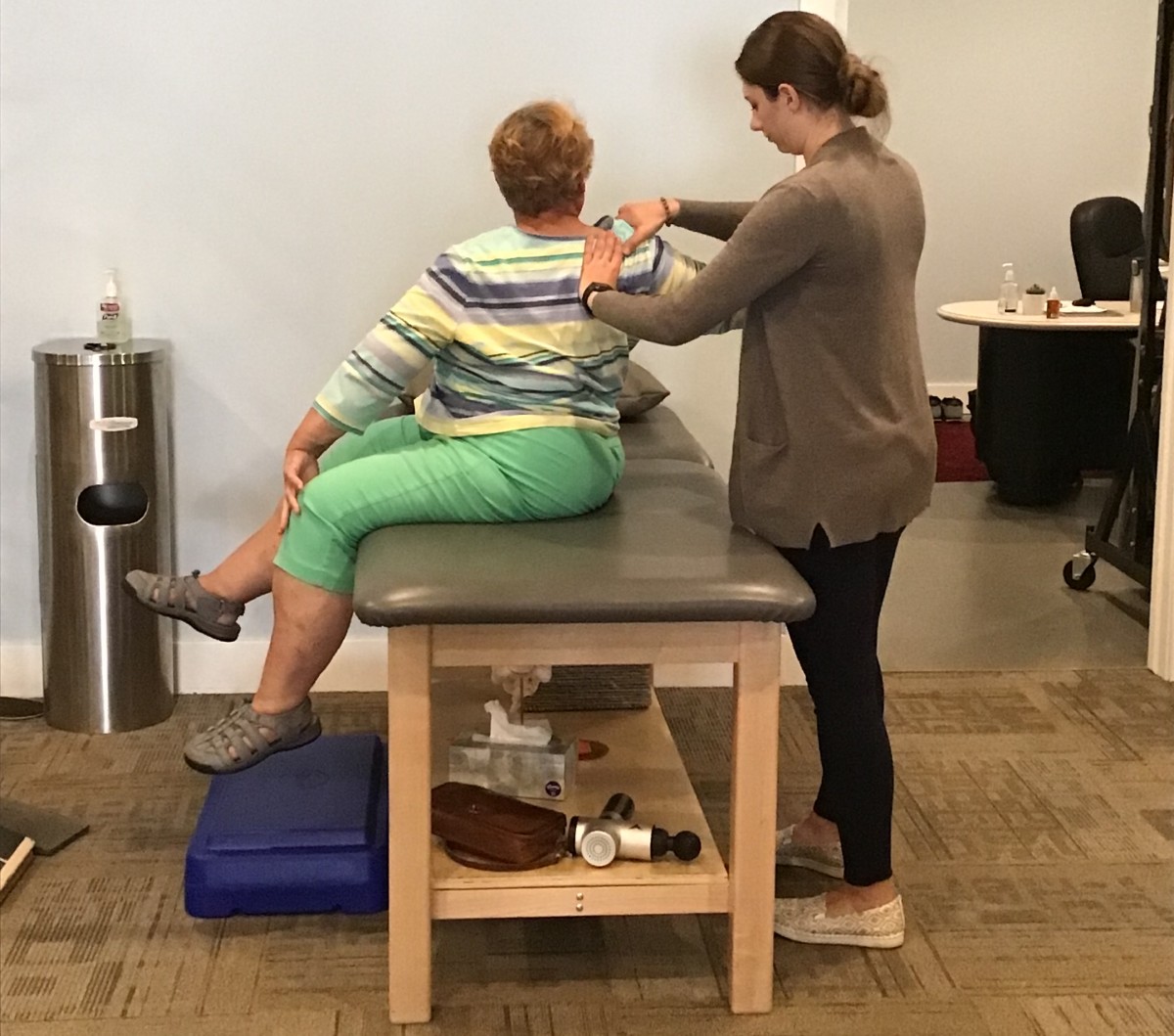- Traverse City, MI |
-
West: W Front St:
(231) 944-6541
-
| Central: Munson Ave :
(231) 421-9300


Spondylolisthesis Treatment includes healing lower back pain, muscle spasms, and numbness in the feet.
Spondylolisthesis is a condition that results when one of the lower vertebrae slips out of position and rests on the vertebra below it. It is typically characterized by lower back pain, muscle spasms, and numbness in the foot.
Individuals with spondylolisthesis may experience difficulty raising their leg straight during simple exercises. Spondylolisthesis therapy can help relieve symptoms and prevent future complications.
Causes of spondylolisthesis vary depending on age, genetics, and lifestyle. A person may be born with a defective vertebra and never experience any symptoms from it. Alternatively, others may develop symptoms as they age or as the result of injury.
Typical causes include:
Tumors
Spondylolysis
Joint injury from arthritis or illness
Fractures from injury
Bone degeneration from overuse or aging
Birth defect
The following are some signs of spondylolisthesis:
Weakness in one or both legs
Tight hamstrings
Pain in the lower back or buttocks
Lordosis or increased inward curve of the spine
Difficulty walking or running for long periods
Bladder or bowel incontinence
Back pain that radiates to one or both legs
Don’t go another day with back pain, burning, tingling, aching pain in your feet, neck or back. Learn how thousands of Americans are getting LASTING relief without pills or surgery. Avoid the 55%+ failure rate and get all the facts!
Diagnosis begins with a careful review of the patient’s medical history and a physical examination.
X-rays of the lower spine are essential for discovering potential bone fractures and checking if the vertebra has slipped out of place. If the misplaced bone is found to be pressing on the nerves, a CT scan may be necessary.


Medication– Doctors usually prescribe over-the-counter nonsteroidal anti-inflammatory drugs (NSAIDs) such as ibuprofen or naproxen to bring relief from spondylolisthesis pain.
Injections– Epidural steroids are injected to send strong anti-inflammatories directly into the affected nerve root.
Surgery– Surgical options for spondylolisthesis typically involve spinal decompression, with or without fusion. It involves removing bone and disk from the spine, to give the nerves more space inside the spinal canal.
Bracing– Bracing is commonly recommended for children. It stabilizes the spine where the vertebra has slipped and limits movement so that fractures can heal.
While doctors have good intentions, they are really just treating your pain symptoms with these treatments, even surgery. These treatments have risks like accidental overdose or infections, just to name two. They are not addressing the ROOT CAUSE of the pain, which is most often a musculoskeletal problem. Poor motion in one or more areas of your body can cause the problems in the spine-- and that is causing your back pain or sciatica. Only good physical therapy can address the root causes of stenosis and relieve pain for good.
Most traditional treatments only have a 45% success rate which is why our goal is to provide you with safer and more effective treatment options. Our procedures are designed to locate the underlying cause of pain to soothe the irritated nerves, restore function, and stabilize the spine.

The most important element of healing is identifying the cause. The cause is a movement disorder somewhere else in the body that is creating more stress in the injured area than the tissue can handle. A full body movement assessment is the most important aspect in finding the true cause. This involves assessing how mobile and stable the areas above and below the injured tissues are. Once the dysfunctional areas are identified the physical therapist can then prescribe home treatments to fix the problem areas.
In order to improve motion in the dysfunctional areas that are causing the increased stress on the painful injured tissues the most effect way to make a change in the body is to have a physical therapist use their hands to facilitate the proper motion while you are moving at the same time. This helps improve the path the body takes in order to reduce stress and tenson on the injured area.
The Superior Method aims to educate patients on how the body moves to safely ease pain and restore function.
With our smartphone app called Movement RX, we empower patients with the knowledge and tools needed to attain long-term physical freedom. All of the instructions provided by your physician will also be video-recorded and sent directly to your email or mobile device.
This principles-based method is designed to improve how the mind, body, and spirit work together to facilitate complete healing. All Superior Physical Therapy providers are Fellows of Applied Functional Science through the Gray Institute. This organization is led by the reputable physical therapist, Dr. Gary Gray.


Mechanical vibrations that penetrate deep into the muscle tissue enable tissue regeneration and improve the lactic cycle, which is one of the most common causes of pain. The procedure also helps boost circulation and lymphatic flow to alleviate pain.
A fast, safe, and virtually pain-free method to reduce pain and address musculoskeletal presentations. In dry needling, trigger points or local contractures are stimulated by monofilament needles.
The McKenzie Method® of Mechanical Diagnosis and Therapy® (MDT) is a distinguished and internationally researched method of diagnosis and treatment for spinal and extremity musculoskeletal conditions. Created by New Zealand Physiotherapist Robin McKenzie, this system has been used globally for over 60 years.
MDT-certified clinicians assess and treat all types of musculoskeletal disorders including complications in the spine, muscles, tendons, and extremity joints.

Here's a great article with more in-depth info on Spondylolisthesis: Click Here.
We've got more info on this and many other topics on our BLOG. Find out how to heal your pain by Clicking Here.
Find out if Spondylolisthesis therapy is right for you, book your complementary path forward consultation with pain and movement specialist, Dr. Andrew Gorecki.
On this call you will be asked some basic questions as well as provided more information about how to treat your pain. Don’t delay, pick up the phone and call 231.944.6541 or request a consultation today before spots fill up.
